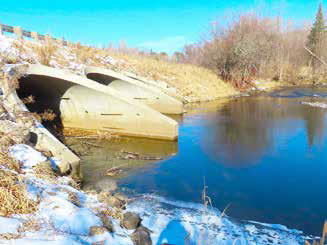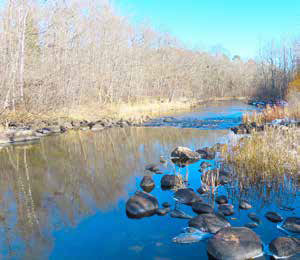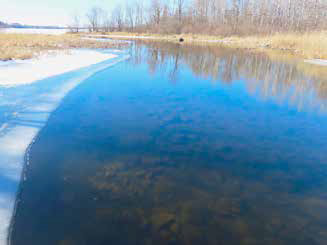Watching and discussing the water flowing through Ely takes place during every month of the year. As that water leaves Ely through Shagawa Lake down Shagawa River Winton and Fall Lake.
Ely is near the top of the river’s watershed. The town’s water comes from a pump at Burntside Lake and a pipeline to the city’s water plant. After being used throughout Ely, the water flows to the treatment plant before entering Shagawa Lake. Shagawa Lake also collects water from Burntside Lake through the Burntside River and other stream flowages.
Storm sewers throughout Ely empty water into Miner’s Pit Lake before draining into Shagawa Lake. Precipitation and runoff enter Shagawa Lake directly throughout the year.
Shagawa River flow begins at its headwaters in Ely and open water almost always exists in temperatures about zero degrees Fahrenheit.
So even throughout winter, waterfowl come and go. This winter, February has been warmer than usual and trumpeter swans have arrived earlier than usual along with common goldeneyes which stay all winter in the area are gathering in groups.
The river is a nutrient rich source of plants and invertebrate foods.
The City of Ely owns the land along both sides of the river from below Spaulding to the old railroad bridge where the current snowmobile trail crosses the river. Various places can be walked or snowshoed along the river to view wildlife, sunrises, sunsets and night-skies.
As many as 11 swans have already been seen when the surface water was open. All the public land in Ely can be considered our backyard for bird counts and other activities in nature. In addition to this part of the Shagawa River story, next week there will be a part two story that happened last weekend during the Great Backyard Bird Count.



.jpg)









